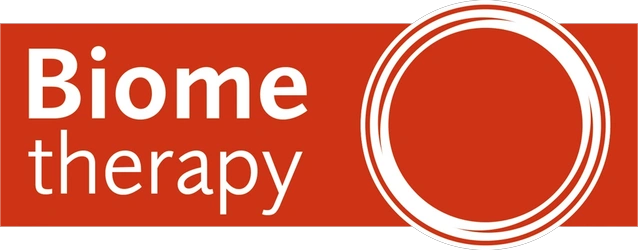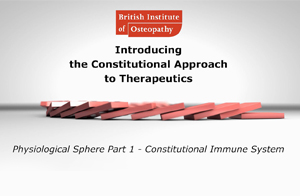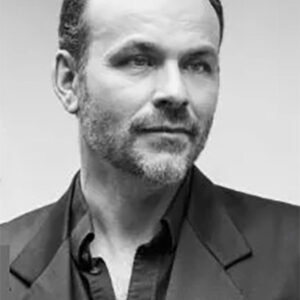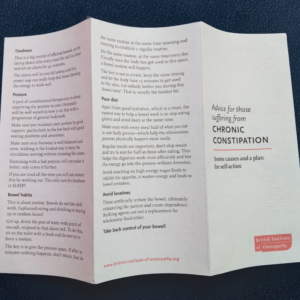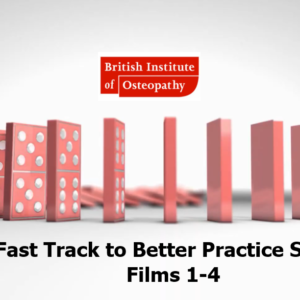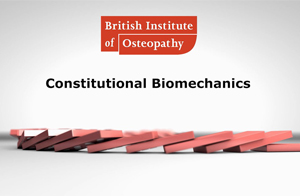Description
Overview
Osteopathy was based upon a constitutional therapeutic approach that offered alternative explanations to treating patients rather than conditions. To really understand the bases for approaching therapeutics in this alternative way, we need to have an appropriate underpinning narrative. We also need to be able to distinguish and determine whether or not our current approach, is really offering an alternative to what is already on offer.
Many of the older osteopathic and Natural Therapeutics texts have long been out of date, not their ideas, but their relevance in the modern clinical setting. The original osteopathic oath left us a legacy to continue to evolve ‘basic biological truths’ and to ‘develop the principles of osteopathy’ from Andrew Taylor Still.
Evolving The Learning Journey
Part 1, Film 1 charts the beginning of this evolutionary journey, where constitutional ideas came from and how I have developed them to work in a modern clinical context. We cannot do this using the medical narrative of ‘treating pathologies’, which are in effect an artificial construct, incompatible with the constitutional approach.
We then move into exploring the clinical application of how the constitutional approach allows the immune system to function as a healing system. Using new ‘fast track’ mind maps, to see the fields of diagnosis and understand the cleaning and healing cycles; the course will consolidate your learning.
Understanding and supporting the processes involved in the inflammatory cycles is a core subject in good patient management. The constitutional understanding of the immune system sees inflammation as a positive process that keeps us alive, not something to fight and suppress.
We will explore the ‘cohorts of patients’, a new concept that will help you decide what patients to take on within your skill set and also know where they are, on their path to recovery. The constitutional approach can be used right across the spectrum of simple entry level cases to deep complex cases. This means you can expand your learning at the pace you want to and take everything you have learned here with you too.
All of these ideas and approaches have been road tested in a busy clinic over a 23 year period, if it hasn’t been useful it isn’t here!
If you want to be able to practice osteopathy using a constitutional approach, you cannot do it without this knowledge under your belt, whatever your practice branding is.
What You Will Learn
This course will fast forward you 27 years of learning and experience. I have researched, distilled and more importantly updated this approach to make complete sense in the modern clinical setting. You will learn the origins of the constitutional approach and see that recognising how the healing process unfolds is a major part of patient mentoring and management back to health.
At all times, whilst on any part of the course, you can contact Howard with questions – ‘If Howard is awake you will get a response within 5 minutes’. Howard believes that the best way to keep uninterrupted learning going is to be able to ask questions and get fast answers’.
Who can we help using this constitutional approach?
The constitutional approach to therapeutics recognises 4 general cohorts or groups of patients. Before we attempt to engage a case – we have to consider whether or not the constitutional approach is clinically appropriate. Group 1 would consider patients who are not complex, rarely if ever suppressing natural healing events. Group 2 would considers patients who range from those who may use occasional over the counter suppression with increasing regularity. Group 3 represents patients who for whatever reason would need specialist knowledge to unpack on the road back to better health. Group 4 represents patients who it would not be considered appropriate to approach from a constitutional perspective or outside the skill set of the practitioner.
Which group of patients are we aiming at approaching on this course?
Each part of the 4 part film course is intended to give the practitioner enough underpinning theory and knowledge to be able to approach patients in groups 1 and 2.
Dealing with patients in group 3 requires an extension of the processes of patient management learned on this course to the next level. Gaining these skills would be part of the Practical Course mentoring pathway to full membership of the British Institute of Osteopathy, due to the complex nature of healing reactions in difficult chronic cases. Group 4 is patients are those deemed to be outside the remit for constitutional approaches or beyond the skill set of the practitioner. The key is that all of the knowledge in each course can be built upon as your ability to apply the work, with mentorship, grows. You make the work your own because this course is about generating peers, not followers. By the end of this course you should be able to confidently decide which group your patient is in and have started developing strategies to understand and help them
For more information on the ‘cohorts of patients’ you can purchase the 3 diagnostic charts used throughout the course here:
Constitutional diagnostic charts
How is the learning pathway explained on the course?
I always illustrate key points, using real case histories from my practice, as this brings the learning alive and makes theory become practice.
You will gain confidence in speaking to your patients about what you do, how you do it and understand how to approach mentoring your patients through treatment reactions – more effectively.
Part 1 is supported by a full set of downloadable notes, essays and articles that support the online video lectures on the key headings below. The online summative assessment for this part of the course will enable you to demonstrate that you have this core part of the journey under your belt.
Film 1 Contents
- Historical origins of the constitutional approach
- In evolution
- What is Osteopathy?
- What is missing?
- Introducing the constitutional fields of diagnosis
- Comparing different therapeutic narratives
- Questioning medical narratives
- Great constitutional authors of influence
- We don’t treat pathology we treat patients
- The cohorts of patients we can help
- The constitutional immune system
- Physiological sphere Part 1
- The value of inflammation in healing
- Cleaning and healing cycles
- Palliation or mediation?
- How often to treat
- Unpacking patients on the road to recovery
- Ideas on managing patients in recovery
- Confounding factors in recovery
- Patient ‘self-medication’
- Psychological factors
- Internally and environmentally
- Dietetics
- Cleaning, healing, up-building
- Rest
- As part of treatment
